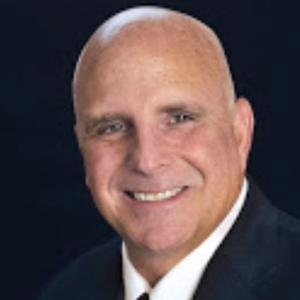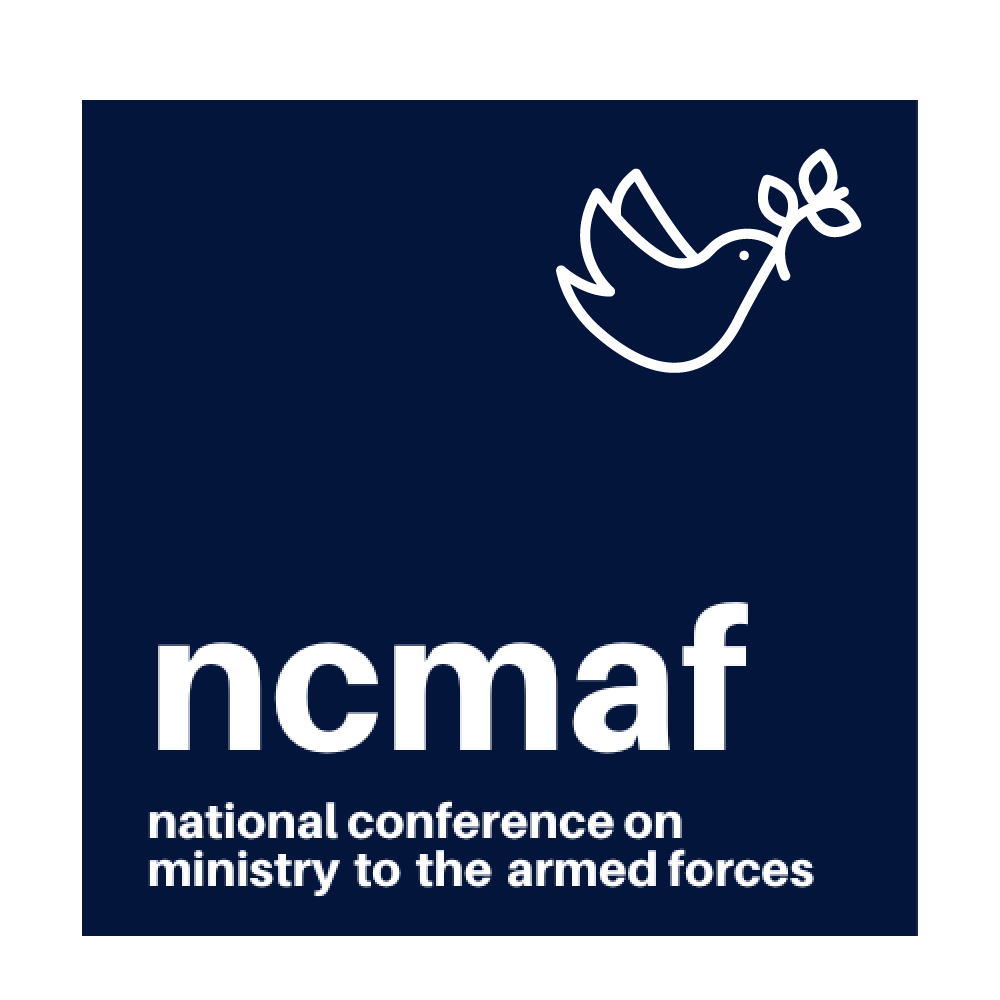NCMAF in the News
National Conference on Ministry to the Armed Forces
‘Miracle’ monument dedicated to Pacific-based chaplains at Hawaii cemetery
December 14, 2017 | Wyatt Olson
HONOLULU — It’s no surprise that Richard Stenbakken would describe Wednesday’s dedication of a 1,600-pound monument honoring chaplains at the Punchbowl cemetery as “a miracle.”
After all, Stenbakken spent 23 years as a chaplain in the Army, then took early retirement to work on recruiting and vetting chaplains for the armed services.
The claim of divine intervention, however, arises because he spent the past two years garnering support, maneuvering through red tape and producing an 88-page application, only to see the planned dedication ceremony at the National Memorial Cemetery of the Pacific practically derailed at the last minute by late shipping and forest fires.
“Believe me, getting that stone here as late as it got in, and getting it finished in time – every step along the way was a miracle,” he said. “I mean seriously a miracle.”
It was two years ago that Stenbakken was visiting the Punchbowl Cemetery, as it’s referred to locally, with friends. While strolling up a promenade called the Memorial Walkway, which is lined with stone-bronze monuments dedicated to a host of military units and organizations, he stopped and puzzled over why the chaplains who’d served in the Pacific did not yet have their own commemoration.
He set about to make that happen.
“I think it’s a reminder to people who walk up there that chaplains have been and are there to support the needs of military people and families,” Stenbakken said. “So it’s not only a look back, it’s a look at right now because chaplains are serving all over. It’s also a look to the future as chaplains continue to do that. It’s a memorial to the past, a touchstone for the present, and it’s a commitment for the future.”
The $3,000 monument was funded by the National Conference on Ministry in the Armed Forces and the Jewish Welfare Board.
During the dedication, Maj. Gen. Paul Hurley, chief of chaplains of the U.S. Army, said the monument would “tangibly mark what it is, and why it is, chaplains are here,” which he described as “our holy and sacred business of caring for these souls and their wellbeing.”
Many chaplains have died in pursuit of that mission.
According to the 1994 book “Battlefield Chaplains: Catholic Priests in World War II,” 100 chaplains in the Army and Marines were killed in action during World War II.
Last week, on the day of the 76th anniversary of the Japanese surprise attack on Pearl Harbor, Secretary of the Navy Richard Spencer awarded the Silver Star to Chaplain Lt. j.g. Aloysius Schmitt for sacrificing his life in helping his shipmates on the USS Oklahoma get off the doomed battleship.
During the same war, the famed “Four Chaplains” — Lt. George Fox, Lt. Alexander Goode, Lt. John Washington and Lt. Clark Poling — gave up their life jackets as the USS Dorchester sank in the North Atlantic in 1943. They perished so that four others might have a chance to survive.
“Anyone who has ever worn the cloth of our nation, that represented their faith tradition, has stood in the breach and made a difference and said to God, “I will hold your people in my hand.’ That’s why we’re here today,” said John Lea III, a retired Navy chaplain, during the ceremony.
But the dedication ceremony long planned for Wednesday almost didn’t happen.
The nearly 1-ton block of black granite arrived in Southern California from India only last week, said Stenbakken, a Seventh-day Adventist.
Plans to ship it to Hawaii by boat had to be abandoned. Even though the cost of shipping by air would exceed the monument’s price tag, it was the only option. But first the stone had to be trucked 100 miles north to Los Angeles International Airport.
“But to get it from there to LAX, the passage was through where they were having forest fires,” he said. “Nobody wanted to ship it.”
He finally wrangled a trucker to do the job, and the stone arrived in Hawaii Saturday morning. Engravers at Honor Life Memorials in Kaneohe agreed to work through the weekend to ensure the monument would be ready for the dedication.
“When Dick says it was a miracle,” Lea said, “this stone was unengraved and sitting in San Diego on Friday, and here it is today – engraved, installed and now being dedicated.
“Clearly, God favors crazy Seventh-day Adventists,” he said, jokingly.
Leading Experts and Advocates to Collaborate on Critical Caregiving Issues Through Elizabeth Dole Foundation Impact Councils
February 11, 2015
"After the 2014 release of the Elizabeth Dole Foundation commissioned RAND study that uncovered the gaps in support facing America’s 5.5 million military and veteran caregivers, the Foundation will launch seven Impact Councils at this week’s Hidden Heroes Impact Forum to address the most urgent concerns of those caring for wounded, ill and injured warriors. Based on recommendations from the RAND study, each council will focus on one of the following areas: ... Interfaith Action and Ministry," of which NCMAF Executive Director, Jack Lea, is a participant.
Read the full coverage on the Elizabeth Dole Foundation Impact Councils
here.
Humanists head to the Hill in hopes of attaining chaplain status
June 22, 2014 // by Chris Carroll
…"A former Navy chaplain and the head of a group that represents chaplains of all stripes, retired Capt. Jack Lea, said it pained him to hear stories about abusive and unprofessional conduct by chaplains.
But most chaplains, regardless of faith group, would serve atheists without spiritually bludgeoning or trying to convert them, said Lea, executive director of the National Conference on Ministry to the Armed Forces.
Lea said his group doesn’t take a stance on whether atheists ought to be chaplains but said the establishment of nonreligious chaplains could have far-reaching consequences for the chaplaincy and military alike.
‘Today they ID’d a potential need and said the current system does not seem constructed in a way to meet the needs,’ he said. ‘That may be fair, but that doesn’t mean we should change the traditional, historical, constitutional office of chaplain.'”
Read the full coverage of the Military Association of Atheists and Freethinkers’ appeal on Capitol Hill
here.
-
Can you tell me more about your organization?
The Twin Cities metro area has a population of between 15 to 20,000 Ethiopian and Sudanese people living in their community. These people are often immigrants or people who are underprivileged. Anywaa Community's goal is to unite the Ethiopian Community in the Twin Cities to improve the lives of this population. We connect organizations and individuals who can help the Ethiopian community thrive.
-
What concerns does your organization take action in?
Our Ethiopian community is concerned with the lack of resources that have been provided to its citizens in the Twin Cities. We work with individuals and organizations to improve the lives of Ethiopian people and families throughout Minnesota. If you are interested in becoming involved with Anywaa Community, click the button at the bottom right or contact us today!
-
How can I get involved?
There are several ways to get involved with us at Anywaa Community Twin Cities. You can call us at 952-486-3635. You can email us at warabwolla@gmail.com. You can also send us a message via our contact form, or you can donate to us. Whatever way you choose, we look forward to your involvement, big or small.
Reverend Dr. James R. “Jim” Carter
The Reverend Dr. James R. “Jim” Carter serves as the Presbyterian & Reformed Commission on Chaplains and Military Personnel Executive Director and Ecclesiastical Endorser (PRCC). He also serves as the Chaplain Ministries Coordinator for the Presbyterian Church in America (PCA) which oversees the Civilian and Armed Services Chaplaincy Ministry. The PRCC is made up of seven Reformed Presbyterian denominations. Dr. Carter returned to the PRCC Commission after serving in a local pastorate for six years following his retirement from many years of active service in the Army Chaplaincy reaching the rank of Colonel. He held a number of ministry leadership positions and was deployed twice to combat during his years of service.

Dr. Carter is a native of Monroeville, Alabama. After attending Belhaven College and Reformed Theological Seminary and receiving his ordination as a Presbyterian Minister (PCA), Jim entered the Army Chaplain Corps in 1988. He previously served in the Army Reserves as a Second Lieutenant Chaplain Candidate from 1986-1988. Chaplain Carter’s degrees include a Bachelors of Art from Belhaven College, Jackson, Mississippi; a Master of Divinity and a Master of Arts in Marriage and Family Therapy from Reformed Theological Seminary, Jackson, Mississippi and a Doctor of Ministry from Erskine Theological Seminary, Due West, South Carolina. Chaplain Carter’s military education includes the U.S. Army Chaplain Basic Course and Advanced Courses, Combined Arms Service Staff School (CAS3), the Command and General Staff College, and the Chaplain Lieutenant Colonel Course.
His previous military assignments included: 24th Infantry Division, 3rd Engineer Battalion (Combat), Fort Stewart, Georgia; 2-7 Infantry Battalion, Fort Stewart, Georgia with a combat tour in Saudi Arabia-Iraq (Operation Desert Shield and Storm); 59th Ordnance Brigade, Sogel, Germany; 409th Base Support Battalion, Grafenwoehr, Germany; 4-5 Field Artillery Battalion, 1st Infantry Division, Fort Riley, Kansas and 4-1 Field Artillery Battalion, 1st Infantry Division, Fort Riley, Kansas, and 3rd Brigade Combat Team, 1st Armored Division, Fort Riley, Kansas; Area III Installation Chaplain, Camp Humphrey’s, Korea; Brigade Combat Training Religious Support Observer Controller (BCTP), Fort Leavenworth, Kansas; 3rd Regiment and Senior Pastor of the West Point Cadet Chapel, United States Corps of Cadets, United States Military Academy, West Point, New York; Deputy Installation Chaplain and Chief of Religious Support Operations, Fort Bliss, Texas; 4th Infantry Division Chaplain, Fort Hood, Texas and Multi-National Division Baghdad Command Chaplain, (MND-B) Baghdad, Iraq (Operational Iraqi Freedom (OIF 07-09); Senior Pastor of the Protestant Congregation and Deputy Installation Chaplain, United States Army War College, Carlisle Barracks, Pennsylvania.
Dr. Carter’s awards and decorations include the Legion of Merit, Bronze Star Medal with one Oak Leaf Cluster, Meritorious Service Medal with two Oak Leaf Clusters, Army Commendation Medal with four Oak Leaf Clusters, Army Achievement Medal with two Oak Leaf Clusters, National Defense Service Medal, Iraq Campaign Medal with two Stars, Global War on Terrorism Service Medal, Korean Defense Service Medal, Army Service Ribbon, and the Overseas Service Ribbon.
Dr. Carter is married to the former Terri Ganey of Mullins, South Carolina. They have two children (Sarah) married to Michael O’Brien and son Chaplain (CPT) David Carter is married to Emily Wenrick Carter and grandsons James Haddon Carter and Reggie Taylor Carter. He enjoys sports, tennis, traveling, reading and serving his local community. Jim and Terri live in Mullins, South Carolina.
"It is a hardship upon the Regiment I think, to be denied a Chaplain."
SOURCE: George Washington to Governor Robert Dinwiddie of Virginia, 4/29/1757, The Writings of George Washington, 2:33
All Rights Reserved | National Conference on Ministry to the Armed Forces
